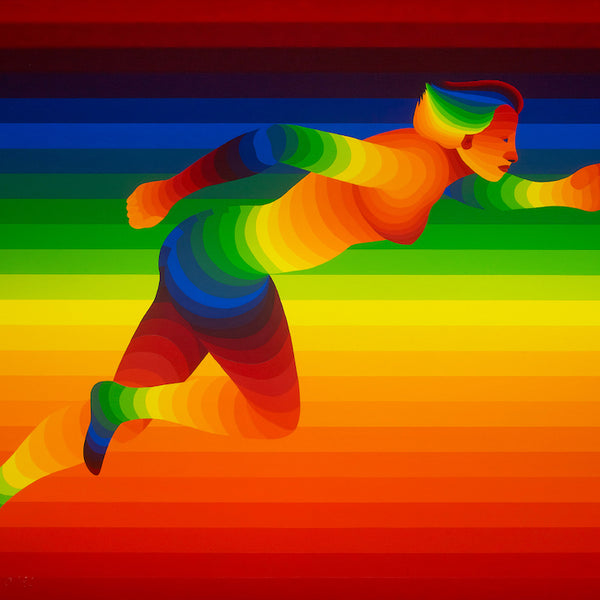Ay-O
Ay-O, along with Masuo Ikeda and others, actively participated in the Demokrato Artists Association during the 1950s, gaining attention for his vibrant and colourful paintings. In 1958, he relocated to New York and began incorporating physical objects into his art to initiate interactions with the outside world, thereby allowing for sensory experiences. This approach led to his ‘finger boxes’, inviting individuals to insert their fingers into a hole on the side of the box to feel the hidden materials. Ay-O also developed installation pieces that seamlessly merge with their surroundings. His artworks engage all five senses, transcending the boundaries of traditional painting. Ay-O’s choices of various locations and environments make him a precursor to contemporary Happenings and installations.
As a member of the Fluxus movement, which transcended the narrow divisions of genre by including musicians, poets and artists in performances and printed works, Ay-O collaborated with notable figures such as Nam June Paik and Yoko Ono. Departing from the conventional practice of using only lines in his artwork, he began incorporating various colours, from red to purple. This innovation led to the creation of his renowned ‘rainbow’ works, which propelled him to international recognition and earned him worldwide fame as well as the nickname ‘rainbow artist’, following his exhibition at the 1966 Venice Biennale.








